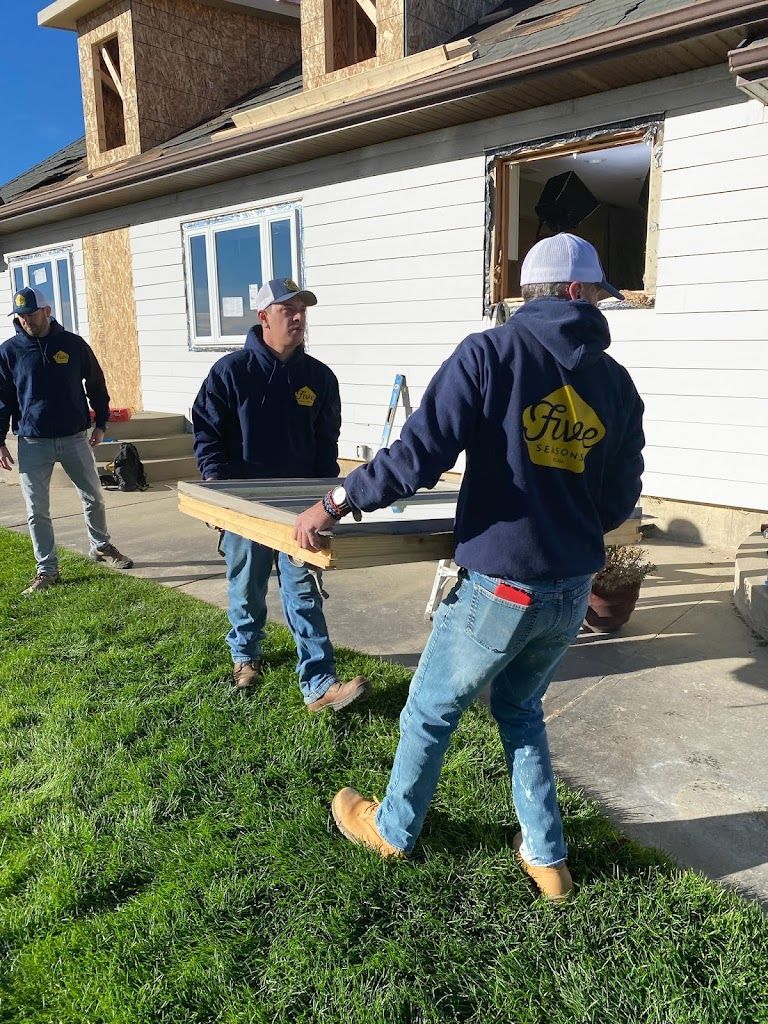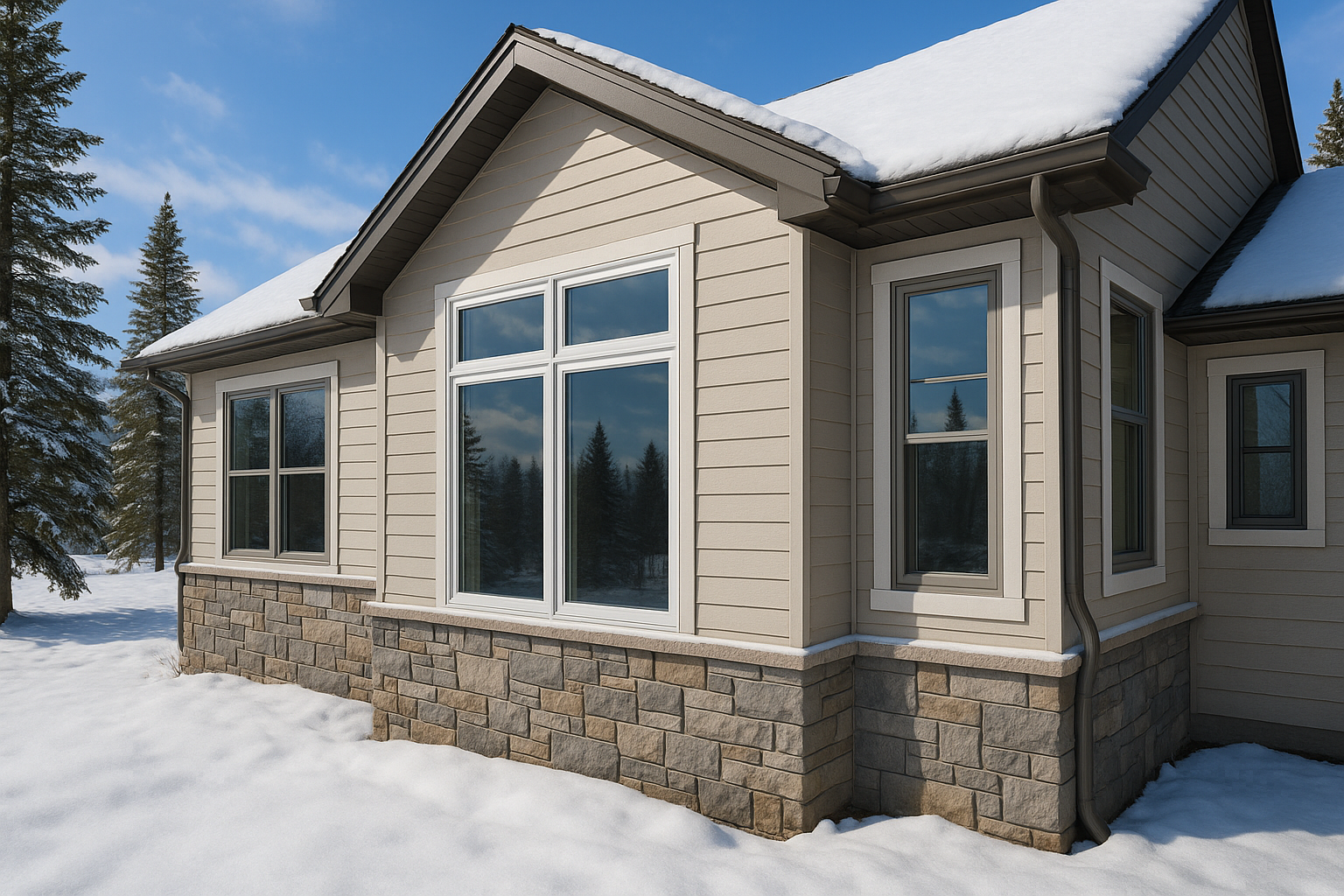Durable replacement windows for cold climates require triple-pane glass, thermally broken frames, high-quality weatherstripping, and materials like vinyl, fiberglass, or wood-clad that resist freeze-thaw cycles and maintain structural integrity in temperatures below -20°F.
According to ENERGY STAR, windows rated for Northern climate zones can reduce heating costs by 15-25% compared to standard windows, with the most durable options featuring U-factors of 0.30 or lower and impact-resistant frames designed to withstand extreme temperature fluctuations.
Cold climate homeowners face unique challenges when selecting replacement windows. Harsh winters with freezing temperatures, ice storms, and constant freeze-thaw cycles can quickly damage poorly constructed windows, leading to drafts, condensation issues, and skyrocketing energy bills. Understanding which features and materials provide the best durability ensures your investment performs reliably for decades while keeping your home comfortable and energy-efficient through even the harshest winters.
Essential Features for Cold Climate Durability
Advanced Glazing Systems
Triple-pane glass represents the gold standard for cold climate windows, providing superior insulation compared to double-pane alternatives. The three layers of glass create two insulating air spaces, dramatically reducing heat transfer and preventing interior condensation that can lead to frame damage.
Low-E (low-emissivity) coatings on the glass surfaces reflect interior heat back into the home while allowing beneficial solar gain during winter months. Argon or krypton gas fills between panes further enhance insulation performance, with krypton offering superior thermal properties for the most demanding climates.
Thermal Break Technology
Thermal breaks interrupt the path of heat conduction through window frames, preventing cold transfer from exterior to interior surfaces. This technology uses non-conductive materials like polyurethane or vinyl strips to separate the interior and exterior portions of metal frames.
Without thermal breaks, metal frames can create condensation and frost buildup on interior surfaces, leading to water damage and reduced comfort. Quality thermal break systems maintain consistent interior frame temperatures even when exterior temperatures drop well below freezing.
Material Choices for Maximum Durability
Vinyl Windows for Cold Weather Performance
Vinyl windows excel in cold climates due to their natural resistance to moisture, corrosion, and temperature extremes. High-quality vinyl formulations include impact modifiers and UV stabilizers that prevent cracking and brittleness even in severe cold conditions.
Multi-chamber vinyl frames provide excellent insulation while maintaining structural strength during thermal cycling. Unlike materials that expand and contract significantly with temperature changes, quality vinyl maintains consistent performance and seal integrity throughout winter weather patterns.
Fiberglass: The Premium Cold Climate Choice
Fiberglass windows offer exceptional durability in cold climates because they expand and contract at nearly the same rate as glass, maintaining seal integrity and preventing air leaks over time. This dimensional stability is crucial for long-term performance in climates with extreme temperature swings.
The material's inherent strength allows for larger glass areas without compromising structural integrity, maximizing natural light while maintaining energy efficiency. Fiberglass also resists moisture absorption, preventing the rot and decay issues that can affect other materials in harsh winter conditions.
Weatherproofing and Seal Systems
Advanced Weatherstripping Technology
Durable weatherstripping systems use materials like EPDM rubber or silicone that remain flexible at low temperatures while providing consistent compression seals. Multi-stage weatherstripping creates redundant barriers against air and water infiltration.
Quality weatherstripping systems include drainage channels and vapor barriers that manage moisture effectively, preventing ice buildup that can damage seals or prevent proper window operation. These systems must maintain their sealing properties through thousands of freeze-thaw cycles.
Installation Considerations for Cold Climates
Proper installation becomes critical in cold climates where thermal movement and moisture management determine long-term performance. Flashing systems must accommodate thermal expansion while preventing water infiltration that can freeze and cause structural damage.
Window installation in cold climates requires specialized techniques including proper insulation around frames, vapor barrier installation, and drainage system integration. Professional installers experienced with cold climate conditions understand these requirements and ensure installations perform reliably throughout harsh winter seasons.
Energy Efficiency Standards and Ratings
Understanding Cold Climate Performance Ratings
ENERGY STAR provides specific ratings for Northern climate zones, with the most stringent requirements for areas experiencing severe winter conditions. U-factor ratings of 0.30 or lower indicate superior insulating performance, while Solar Heat Gain Coefficient (SHGC) ratings between 0.35-0.60 optimize winter solar gain.
Visible Transmittance (VT) ratings above 0.40 ensure adequate natural light during shorter winter days, while Air Leakage ratings of 0.30 or lower prevent drafts that compromise comfort and efficiency. These ratings provide objective measures for comparing window performance in cold climate applications.
Condensation Resistance and Thermal Performance
Condensation Resistance Factor (CRF) ratings indicate a window's ability to resist interior condensation formation. Windows with CRF ratings above 50 significantly reduce condensation issues that can lead to mold, mildew, and frame damage in cold climates.
Thermal performance testing includes evaluating window operation at extreme temperatures, ensuring hardware functions properly and seals remain effective even when temperatures drop below -20°F. This testing validates that windows will operate reliably throughout the heating season.
Hardware and Operation in Extreme Cold
Cold-Weather Hardware Systems
Window hardware must maintain smooth operation despite temperature extremes and potential ice formation. Stainless steel and brass components resist corrosion from road salt and de-icing chemicals common in cold climate areas.
Multi-point locking systems distribute loads evenly across the frame, preventing warping and maintaining seal integrity under thermal stress. Operating mechanisms include features like internal drainage and thermal breaks to prevent ice formation that could prevent proper window function.
Maintenance Requirements for Cold Climate Windows
Cold climate windows require specific maintenance schedules to ensure long-term durability and performance. Regular inspection of weatherstripping, drainage systems, and hardware prevents minor issues from becoming major problems during heating season.
Proper cleaning techniques remove salt residue and ice buildup without damaging seals or hardware. Understanding seasonal maintenance requirements helps maximize window lifespan while maintaining peak energy efficiency throughout harsh winter conditions.
When planning cold climate window replacements, consider how different materials and colors perform in harsh weather conditions. For detailed guidance on color selection and performance in challenging climates, check our comprehensive guide: 🔗 Vinyl Window Color Options in Colorado: Complete Guide to Popular Choices
People Also Ask About Durable Cold Climate Windows
1. What makes replacement windows durable enough for extreme cold weather?
Durable cold climate windows combine several critical features: triple-pane glass with low-E coatings, thermally broken frames that prevent cold transfer, and materials like vinyl or fiberglass that resist temperature-related expansion and contraction.
The most important durability factor is thermal stability. Windows must maintain their structural integrity and seal performance through thousands of freeze-thaw cycles. Quality manufacturers test their products at extreme temperatures to ensure components won't crack, warp, or fail when temperatures drop below -20°F.
Advanced weatherstripping systems using EPDM rubber or silicone materials remain flexible at low temperatures while providing consistent air sealing. These systems include drainage features that prevent ice buildup which could damage seals or prevent proper operation during winter months.
2. Are triple-pane windows worth the extra cost in cold climates?
Triple-pane windows provide significant value in cold climates through reduced energy costs, improved comfort, and enhanced durability. The additional glass layer and extra air space dramatically improve insulation performance, often reducing heating costs by 15-25% compared to double-pane windows.
Beyond energy savings, triple-pane windows virtually eliminate interior condensation that can damage frames and create mold issues. The improved thermal performance also reduces drafts and cold spots near windows, significantly enhancing comfort during winter months.
The durability benefits justify the investment as well. Triple-pane windows experience less thermal stress because interior glass surfaces stay warmer, reducing the expansion and contraction cycles that can damage seals and frames over time. This extended lifespan often makes triple-pane windows cost-effective over their operational lifetime.
3. Which window materials perform best in harsh winter conditions?
Fiberglass windows offer the best overall performance in harsh winter conditions because they expand and contract at nearly the same rate as glass, maintaining seal integrity through extreme temperature cycles. This dimensional stability prevents the air leaks that commonly develop in other materials over time.
Vinyl windows also perform excellently in cold climates, particularly high-quality formulations with impact modifiers and UV stabilizers. Vinyl naturally resists moisture and corrosion while providing excellent insulation properties through multi-chamber frame designs.
Wood-clad windows combine the insulating properties of wood interiors with durable exterior cladding materials like aluminum or vinyl. However, they require more maintenance and careful installation to prevent moisture issues that can cause problems in cold, wet climates.
4. How do I know if my current windows need replacement before winter?
Several signs indicate windows need replacement before winter: visible drafts around frames, interior condensation between glass panes, difficulty opening or closing windows, and noticeable cold spots near windows during mild weather.
Energy bills that increase significantly during shoulder seasons often indicate window performance problems that will worsen during peak winter months. Ice formation on interior window surfaces or water damage around frames suggests seal failure that compromises both comfort and structural integrity.
Professional energy audits can identify problem windows using thermal imaging and air leakage testing. These assessments provide objective data about window performance and help prioritize replacement projects based on potential energy savings and comfort improvements.
5. What installation factors are most important for cold climate window performance?
Proper flashing and vapor barrier installation are critical for cold climate performance. Flashing systems must prevent water infiltration while accommodating thermal movement, and vapor barriers prevent interior moisture from reaching cold surfaces where it could condense and freeze.
Insulation around window frames requires special attention in cold climates. Low-expanding foam or fiberglass insulation fills gaps without creating thermal bridges that could cause condensation or ice formation. Proper insulation also prevents drafts that compromise comfort and efficiency.
Professional installation by contractors experienced with cold climate conditions ensures these details are handled correctly. Experienced installers understand local building codes, weather patterns, and installation techniques that maximize window performance and longevity in harsh winter environments.

Our Take
At Five Seasons Windows & Doors, we understand that cold climate window selection requires balancing initial investment with long-term performance and durability. Having installed thousands of windows throughout Colorado's challenging climate, we've seen how proper material selection and installation techniques determine whether windows provide decades of reliable service or require premature replacement.
The most successful cold climate installations prioritize thermal performance and structural integrity over initial cost savings. While premium features like triple-pane glass and fiberglass frames cost more upfront, they consistently deliver better comfort, lower energy bills, and extended service life that justifies the investment.
Our experience shows that homeowners who invest in properly rated cold climate windows report significantly higher satisfaction levels and fewer maintenance issues over time. The key is selecting windows engineered specifically for harsh winter conditions rather than trying to adapt standard products to extreme climate demands.
Final Takeaway
Selecting durable replacement windows for cold climates requires understanding how extreme weather affects window performance and longevity. The most successful installations combine advanced glazing systems, thermally stable materials, and professional installation techniques designed specifically for harsh winter conditions.
While premium cold climate windows require higher initial investment, their superior energy efficiency, enhanced comfort, and extended service life provide excellent long-term value. Features like triple-pane glass, thermal breaks, and advanced weatherstripping systems aren't luxuries in cold climates – they're essential for reliable performance and durability.
Working with experienced professionals who understand cold climate requirements ensures your window investment delivers maximum performance and longevity. By prioritizing thermal performance and structural integrity, you can enjoy comfortable, energy-efficient windows that withstand decades of harsh winter weather while enhancing your home's value and comfort.
Get Started Today
Five Seasons Windows & Doors is Colorado’s top-rated local window company with 230+ 5-star reviews. We offer expert advice, no-pressure quotes, and flexible project options — including phased installs. Schedule your consult today.




